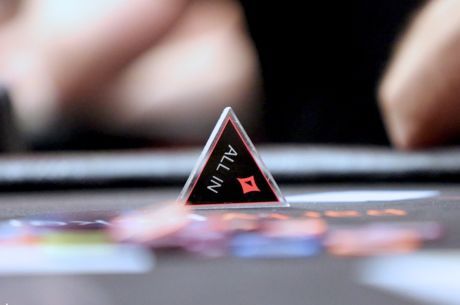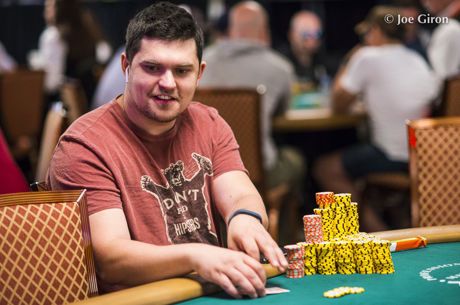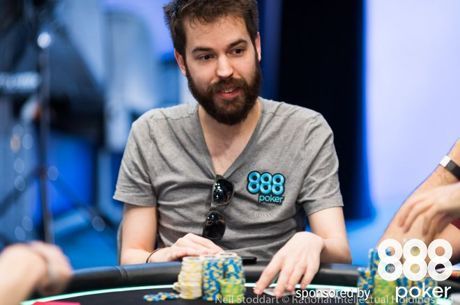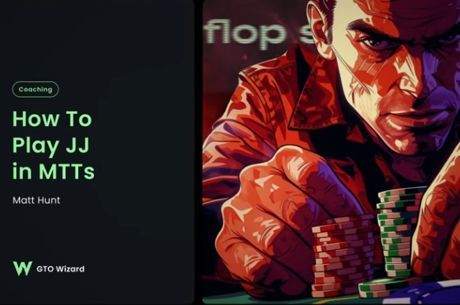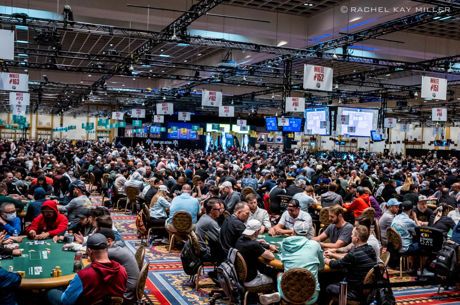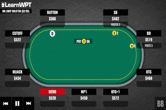Hand Analysis: The Worst Imaginable Bluff
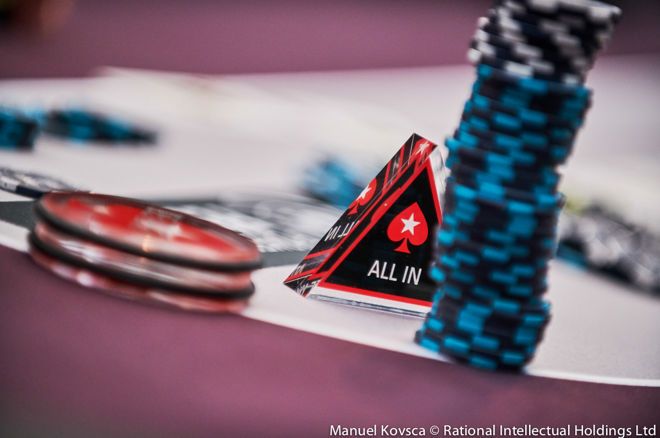
Not all bluffs that work can be said to have worked equally well. Neither is it true that all bluffs that get caught are equally bad.
You can make a good bluff that will work 90 percent of the time, but sometimes you run into that 10 percent of your opponent's range against which it doesn't. You can also get lucky and bluff in a bad spot, but nonetheless get it through.
Then there are bluffs that are not good ones that do not work. That's what we're looking at today.
A Preflop Four-Bet
A regular was having a good session at the six-handed 100NL ($0.50/$1) Zoom tables on PokerStars when he opened from under the gun to $3. Next to act, another regular made it $10 to go. Everyone else folded to let those two tangle. The effective stacks were $300.
Playing at this stack depth makes larger three-bet sizes possible. They leverage more fold equity and can't be punished easily by four-bets since four-bets can still be called (or raised) with considerable money behind. On that cue, when it folded around to the initial raiser, he four-bet to $29.
So far all sizes seem reasonable. With stacks 100 big blinds deep, we might expect to see a 3x-9x-23x progression �� 2.5x-8x-20x is also common.
Meanwhile if under the gun were to four-bet the $10 three-bet to $23, it is unlikely the in-position player would fold a single hand. If UTG has two aces, he would like to build a bigger pot, and if he has a bluffing hand like A4s, he would like to solicit some folds.
The four-bet was called and the flop came A?Q?2?.
Bombs Away
Now we have a situation where the in-position player probably cannot have top set, but could have a wide variety of value hands otherwise. The out-of-position player can also have those value hands and top set. It is rare that both players are so uncapped. Often early position confrontations will have that quality, particularly in Zoom cash games today.
Our UTG player started with a flop bet of $18, which was called. The turn was the 3? and UTG increased the pressure by betting $62.
That's an interesting sizing progression as the flop bet would be unlikely to fold anything but the least stubborn combinations from the in-position player's range. If anything, it looks like the UTG player is hoping to be floated on the flop. This could mean he is trying to establish his opponent's weakness on the flop in order to steal the pot on the turn with a bigger bet.
How so? On the flop it is easy to call $18, in position, with $250 behind, to win a nearly $80 pot. The pot entering the turn is $96, however. Calling a two-thirds pot bet with one card to come with $190 back (and threatened) is very different from calling one-third pot with two cards to come.
On a board texture such as this, it would make sense for the in-position player to need either a made hand or K?Xx to continue (or both). So if he did call the flop with his whole range, the UTG's bluffing plan might be well-hatched.
The Fireworks
Everything so far is sort of preamble to what happened on the river, which was the 9?, making the final board A?Q?2?3?9?. By then the pot was $220, and under the gun shoved all in for $188.
Let's talk about value hands first. Any flush or straight seems reasonable to shove for value here. That means three unlikely combinations of 54s, and then some preflop bluffs like K?J? and K?10?.
Notice how hard it is for UTG to have a flush in the first place since he would have needed to inflate the pot from out of position before the flop, when he could have just as easily called or folded. Also, can under the gun really have pocket queens? Would he not fear a five-bet before the flop?
More importantly, what hands make sense for UTG to bluff here?
Clearly these are hands that block his opponent's river-calling range but do not block his opponent's river-folding range. So for example, a hand like K?Kx or AxK? might call the turn but fold the river, so it is important that under the gun does not have a hand that includes the K? to bluff.
On the other hand, any nut flushes �� i.e., K?10?, K?J? �� will call the river, of course. But the value of blocking those few combinations of calls is not worth the cost of blocking the six combinations of folds in K?Kx and AxK?.
Therefore a hand that blocks second set and some flushes like Qx10? might be the ideal bluffing candidate for under the gun. It is hard to have this specific hand given the preflop action, so the next best bluffs might be Q?9?-type hands and Ax9?. These hands seem absolutely strong to be bluffing with, but given the size of the pot they are relatively too weak to take to showdown.
Results
The in-position player called with Q?Q?, a hand that makes complete and total sense. Under the gun showed up with 8?7?.
The problem here happens before the river. Consider how much better a hand like 6x3? would have been to take this line, since it has equity against a hand like pocket queens on the flop.
But 8?7? had neither equity before the river, nor blocker value on the river, making it the worst imaginable bluff. Even the biggest bluffs can't get through on brawn alone.
The Stars Group is a majority shareholder in iBus Media

